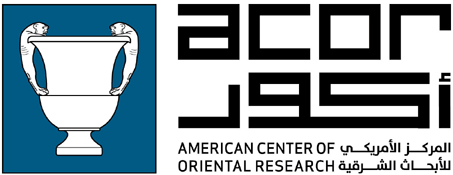Research
What are the geographic dynamics of contemporary war?
My research begins from the insight that war is a process, not an event or outcome. As such, war does not only destroy, but also transforms social relations, spatial forms, and practices of meaning-making in the places it touches.
I am also motivated by critical questions about what kind of actors are involved in these processes - and to what ends. Writing from critical political geography, my scholarship works to disrupt the assumption that violence is a fact of life in particular places, focusing on the Middle East and North Africa.
“Spatial form can alter the future course of the very histories that have produced it…[T]he spatial is integral to the production of history, and thus to the possibility of politics.”
Doreen Massey, Space, Place & Gender
In Syria’s war, the changing geographies of violence, war economies, and displacement shape the nature and future of politics in Syria. War has already left powerful material traces of its passing across the country, but it has also transformed the socio-spatial relations of Syria and its borderlands, as I sketch out in the figure above. Whereas most research focuses on front lines, my research works to move beyond territorial conceptions of civil war to glimpse transnational processes shaping the conflict. Focusing here on Syria’s Northwest, we can see how opposition actors do not simply “control” territory, but seek to govern it through a set of spatial relations that link places like exile-capitals, inner frontiers, IDP camps, and border crossings to conceptions of these relations as composing “Liberated Territories.”
I conduct research with the three goals of a) contributing to scholarly debates on the causes and consequences of political violence; b) enrolling these insights in the service of political critique; and c) sharing these with a broad public audience.
My publications thus span a range of media including single-authored scholarly articles, co-authored articles, book chapters, book reviews, scholarly roundtables, dissertations & theses, and contributions to popular web fora. Below is a list of selected publications grouped by theme. For a complete list of publications, take a look at my CV.

Selected Publications
Geographic Dynamics of Conflict
My primary research is concerned with how contemporary war connects places “at peace” to those on the front lines of conflict. In a moment of increased global connectivity, it is important to examine how rebels, refugees, contractors, and other actors shape and understand these linkages. What historical legacies are they building upon? How do they represent these dynamics? How do we theorize wars as transnational in an era of globalization? These are the core questions I engage with.
Hamdan, A.N. (2016). “Breaker of Barriers? Notes on the Geopolitics of the Islamic State in Iraq and Sham.” Geopolitics 21 (3), 605-627.
Hamdan, A.N. (Forthcoming). “Ephemeral Geopolitics: Tracing the Role of Refugees in Syria’s Transnational Opposition.” Accepted with Minor Revisions at Political Geography.
Hamdan, A.N. (2017). “Thoughts from the Provinces.” International Journal of Middle East Studies 49 (2), 331-334.
Hamdan, A.N. (2020). “The Opposition’s Three Territories,” in Cimino, M. (ed.), Syria: Borders, Boundaries, and the State, pp. 199-219. Palgrave MacMillan.
Hamdan, A.N. “Rethinking Center & Periphery in Syria’s Civil War.” In Preparation for Journal of Peace Research.
Ethnography & Qualitative Methods
Ethnographic methods are an important tool for uncovering political processes, whether these concern the circulation of discourses of identity, belonging, and enmity or trickier, dangerous phenomena like the unfolding of political violence and its many component processes. In my writing I have worked to understand how qualitative research can contribute to discussions that have long been dominated by quantitative research.
Hamdan, A.N. (2018). “Research Note: War, Place, and the Transnational." Mashriq & Mahjar 5 (1), 127-131.
Loong, S., Sidaway, J.D., Woon, C.Y., Agnew, J., Alff, H., Fluri, J., Hamdan, A., Jones, R., Krichker, D. & N. Megoran. (2018), “Reading Nick Megoran’s Nationalism in Central Asia: A Biography of the Uzbekistan and Kyrgyzstan Boundary.” Political Geography 72 (1), 134-143.
Hamdan, A.N. “Conducting Ethnography in Precarious Times.” In Preparation for Qualitative Research.
Commentary & Public Outreach
Sharing my research with the informed public (broadly construed) has long been a core value of my research program. To that end I have periodically contributed to prominent fora my commentary on political violence in Syria.
Hamdan, A.N. (2016). “The Displaced as Actors in Syrian Politics.” For The Middle East Institute, available here.
Hamdan, A.N. (2016). “On Failing to ‘Get it Together’: Syria’s Opposition between Realism and Idealism.” Middle East Report (277), 28-34.
Conferences
I’ve shared my research at a wide variety of scholarly meetings. These include AAG, MESA, BRISMES, etc…
A full list can be found on my C.V.








Affiliations & Memberships
I have developed a robust scholarly network over the years that includes figures whose experts overlap in political violence, refugee studies, Middle East studies, and transnational politics.



